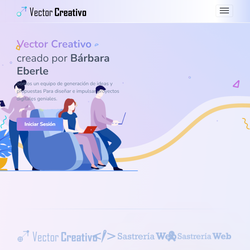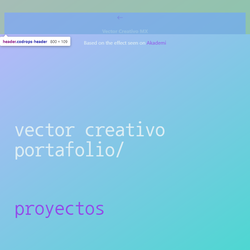
Blender
The Blender Foundation, founded in 2002, is an independent non-profit organization whose main mission is to promote the development and dissemination of Blender, an open source software designed for the creation of 3D graphics, animations and simulations. Over the years, this foundation has been a key player in the open source community and creative industry, enabling robust, free and accessible software to reach professionals and enthusiasts alike around the world.
Origins and Purpose of the Blender Foundation
Since its creation, the Blender Foundation has been committed to the sustainable and collaborative development of Blender. As a public social benefit organization, its resources and efforts are focused on providing a platform where designers, animators, developers and artists can create and share their projects without the financial limitations usually imposed by commercial 3D software programs.
Blender, under the stewardship of the Blender Foundation, has evolved from a simple 3D modeling software to a complete suite enabling advanced animations, visual effects, physics simulations, video compositing, editing and high-quality rendering. All this with the great advantage of being open source software, which means that anyone can access the source code, modify it and adapt it according to their needs. This accessibility has been key to the success of the program, as it has allowed the collaboration of a vast international community of developers and artists who contribute to improving and expanding the capabilities of the software.
The Creation of the Blender Institute
In 2007, as part of a strategy to expand the impact of the Blender Foundation and support the growing development of Blender, the Blender Institute was founded. This institute, which houses the foundation's headquarters, has a particular focus on coordinating creative projects that validate and test Blender's capabilities in production environments. In addition to working directly on the technical development of the software, the institute's creative projects serve as testing "labs" to ensure that Blender meets industry standards and requirements.
The Blender Institute has also become a focal point for the core Blender development team, currently consisting of 24 people. These employees work on implementing new features, improving the user experience, and fixing bugs in the software. Through close collaboration with the community, the Blender Institute ensures that the software remains competitive against other commercial solutions, providing high-quality tools to creators.
The Expansion of the Organization: Blender Studio
In 2020, the Blender Institute split into two entities to improve the efficiency of its operations. On the one hand, the Blender Institute continued its role as the technical arm of the Blender Foundation, focusing primarily on coordinating software development and interacting with the developer community on blender.org.
On the other hand, the Blender Studio was established, a new organization in charge of creating original content and exploring new workflows and production pipelines using Blender. The purpose of Blender Studio is twofold: to produce short films, movies, and other creative projects that demonstrate the software's capabilities in real-world scenarios, and to test and improve Blender's tools and features in a production environment. practical. This focus on creating original content has been crucial in proving that Blender is capable of handling large-scale projects, and also serves as a showcase for new features implemented in the software.
Projects developed in Blender Studio are often collaborative, involving both artists and developers contributing from various parts of the world. These productions not only test Blender's ability to carry out professional projects, but also generate resources and tutorials that benefit the user community, allowing more people to learn to use the software efficiently and creatively.
The Role of the Community and blender.org
One of the most notable aspects of Blender's success is its strong and active community of contributors. The blender.org platform is the epicenter of this community, where developers, artists and users can access the software source code, download new versions, report bugs and suggest improvements. This dynamic of open collaboration is what has allowed Blender to grow at a constant pace, with contributions from both independent developers and large studios.
The community not only contributes to the software code, but also creates educational content, tutorials, modeling resources, plugins, and scripts that extend the capabilities of Blender. Additionally, the Blender Foundation organizes events and conferences such as the Blender Conference, where users and developers come together to share experiences, technical advances, and discuss the future of software.
Impact on the Creative Industry
Thanks to the joint efforts of the Blender Foundation, the Blender Institute, the Blender Studio and its active community, Blender has positioned itself as an indispensable tool in the entertainment and creativity industry. Its use has spread in animation studios, film productions, video game development, and even in fields such as architecture, engineering, and product design. By being free and open source, Blender has democratized access to advanced modeling and animation technologies, allowing people with limited resources to create professional-quality projects.
The Blender Foundation and its associated entities, the Blender Institute and the Blender Studio, have managed to build a collaborative ecosystem that drives innovation in the creation of 3D content. Through its commitment to the community and its focus on open source, Blender has proven that it is possible to offer a powerful and accessible tool, which not only competes with commercial solutions, but also sets new standards in the creative industry.


